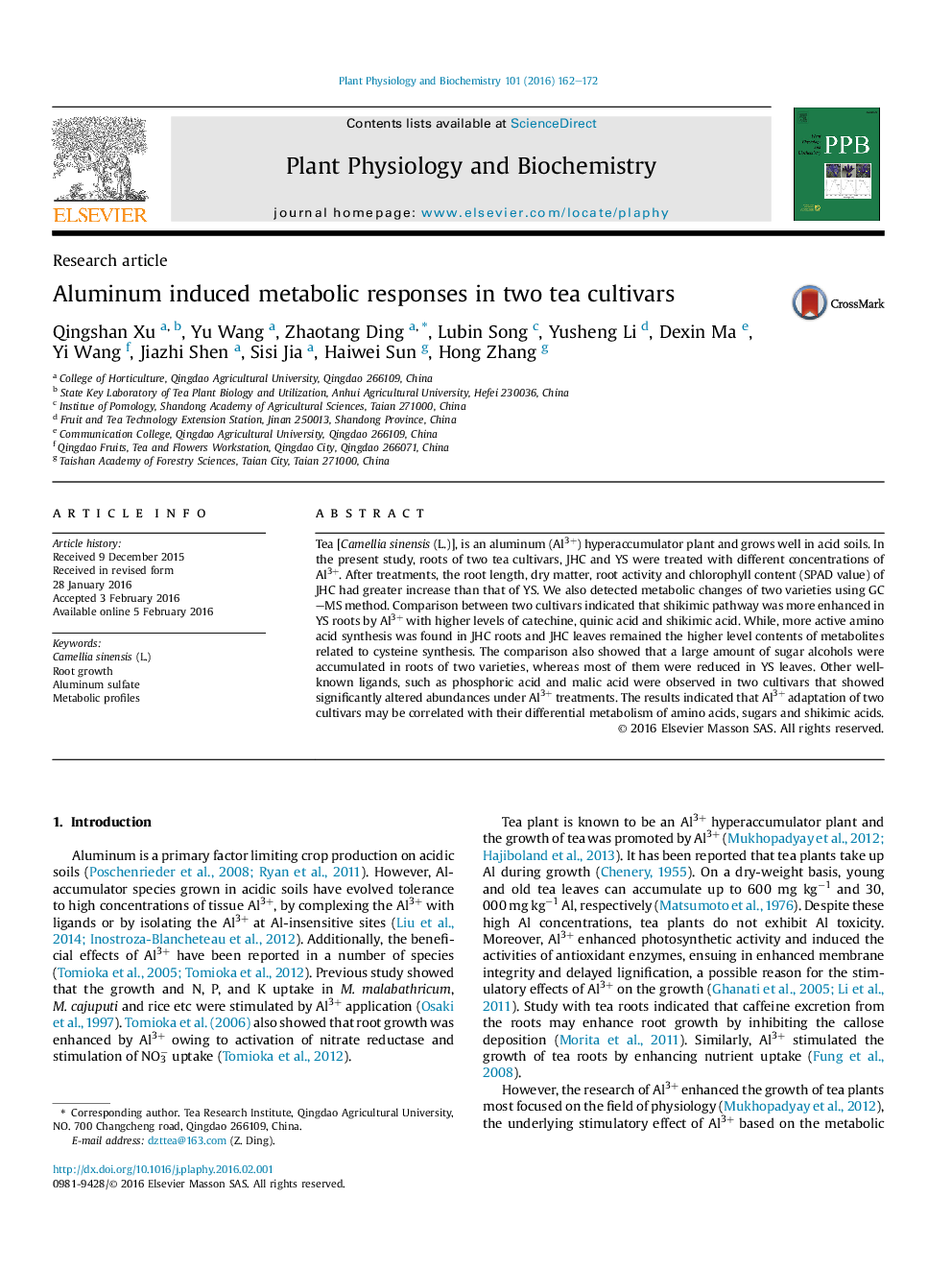| Article ID | Journal | Published Year | Pages | File Type |
|---|---|---|---|---|
| 8354189 | Plant Physiology and Biochemistry | 2016 | 11 Pages |
Abstract
Tea [Camellia sinensis (L.)], is an aluminum (Al3+) hyperaccumulator plant and grows well in acid soils. In the present study, roots of two tea cultivars, JHC and YS were treated with different concentrations of Al3+. After treatments, the root length, dry matter, root activity and chlorophyll content (SPAD value) of JHC had greater increase than that of YS. We also detected metabolic changes of two varieties using GC-MS method. Comparison between two cultivars indicated that shikimic pathway was more enhanced in YS roots by Al3+ with higher levels of catechine, quinic acid and shikimic acid. While, more active amino acid synthesis was found in JHC roots and JHC leaves remained the higher level contents of metabolites related to cysteine synthesis. The comparison also showed that a large amount of sugar alcohols were accumulated in roots of two varieties, whereas most of them were reduced in YS leaves. Other well-known ligands, such as phosphoric acid and malic acid were observed in two cultivars that showed significantly altered abundances under Al3+ treatments. The results indicated that Al3+ adaptation of two cultivars may be correlated with their differential metabolism of amino acids, sugars and shikimic acids.
Related Topics
Life Sciences
Agricultural and Biological Sciences
Plant Science
Authors
Qingshan Xu, Yu Wang, Zhaotang Ding, Lubin Song, Yusheng Li, Dexin Ma, Yi Wang, Jiazhi Shen, Sisi Jia, Haiwei Sun, Hong Zhang,
